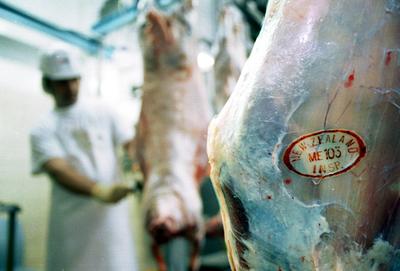New Zealand’s gains from entering into a PTA with an economy whose GDP is projected at US$1.6 trillion for 2010–11, growing at an average real rate of around 8 per cent, are well understood. And the opportunity to expand the relatively small bilateral trade in goods of US$750 million (for the year ending April 2010) between the two countries is a welcome development.
But a bilateral PTA focused on tariff reductions on goods would result in uneven gains since New Zealand, as an aggressive globaliser, has tariff rates on goods that are already substantially lower than India’s. A simple average of applied tariffs by New Zealand on most favoured nation (MFN) basis is 2.2 per cent overall (1.4 per cent for agricultural products and 2.3 per cent for non-agricultural products). In contrast, the corresponding overall tariff rate for India is around 13 per cent (32 per cent for agricultural products).
The above suggests that for a more even handed agreement, the PTA should be broader based and involve not just goods but also services, investments, movement of natural persons and technology. New Zealand’s agreement with China provides the precedent for such an initiative.
There are four strong reasons for such broadening, whether as part of the same agreement, or in separate agreements.
First, the WTO’s country trade profile for 2009 suggests that two-thirds of India’s total goods exports were manufactured goods, while agricultural goods accounted for only a tenth of the total. In contrast, about three-fifths of New Zealand’s total exports were agricultural products, while only one-fourth were manufactured goods.
New Zealand’s exports to India, its 11th largest market, were dominated by coal, unprocessed logs, wool and sheep skin leather — all vital resources. India’s exports basket is narrowly based on diamonds, jewellery and bed linen, which needs to be diversified.
While tariff reduction on agricultural imports could be a sensitive issue from the Indian side, this can be overcome by emphasising New Zealand’s technological expertise in these industries, and by promoting partnership and technological collaborations between the two countries. A joint venture being explored between the Indian Farmers Fertilizer Co-operative (IFFCO) and New Zealand’s Fonterra for dairy farming operations in India is an early example of such possibilities.
Second, there are complementarities between the two countries in services trade. Although detailed data on bilateral trade in commercial services are unavailable, aggregate composition indicates that India’s services are mainly in Information and Communication Technology (ICT)-enabled and professional services (76 per cent in 2009), while New Zealand’s services exports are concentrated in the areas of tourism, education and recreation. Partnership of Indian companies with New Zealand organisations could be facilitated by a broader FTA, involving liberalisation of ICT-enabled services. In a similar way, partnership by New Zealand organisations with India’s education industry could provide significant market potential for them and help address major constraints in India’s progress toward a knowledge-based economy. India is already among the fastest growing education markets for New Zealand, with nearly 9,000 Indian students contributing around NZ$100 million (US$72 million) to its economy.
Prospects for the expansion of tourism and related services are encouraging. Indian visitors to New Zealand in 2009 were 26,000, constituting the ninth-largest group. As incomes grow, the flow of Indian visitors can be expected to increase. Measures such as visa on arrival, multiple entry longer-term business visas, and greater cultural exchanges, negotiated as part of the FTA, could assist in facilitating deeper engagement. This is where the Indian diaspora of over 100,000 in New Zealand (with about 30 per cent in professional, managerial and administrative positions) could play an important catalytic role, helping to expand bilateral investment flows between the two countries that are currently insignificant. Thus the India-NZ FTA should consider negotiating ways to liberalise, facilitate and promote bilateral investment flows between them.
Third, New Zealand’s population is ageing, with the median age projected to be 40 by 2030, compared to 32 for India. With ageing, health care costs increase disproportionately. So partnerships with India’s pharmaceutical and health care industries, as part of the FTA, could help in managing health care costs while using Indian research capabilities in a wide range of areas by off-shoring some of the R&D and related activities, thus expanding the economic space for both. Liberalisation of arrangements for the movement of natural persons will also help expand New Zealand’s talent pool, while providing greater opportunities for the India diaspora.
Fourth, both countries are members of the East Asian Summit comprising 10 Southeast Asian countries plus India, New Zealand, Japan, Korea, Australia and China (the US and Russia are expected to join soon), which is among the more representative forums for promoting economic integration in the Asia Pacific. As the region increases its weight in global economic affairs, a broad-based bilateral PTA will provide a constructive signal for greater integration in the region.
But New Zealand and India must take steps to ensure the transaction costs of utilising FTAs are low, particularly for small to medium enterprises. Both countries should monitor the extent to which different sectors take up the preferences available under the agreement.
Mukul G. Asher is Professor of Public Policy, Lee Kuan Yew School of Public Policy, at the National University of Singapore. Rahul Sen is Senior Lecturer in Economics, AUT Business School, at the Auckland University of Technology, New Zealand.

